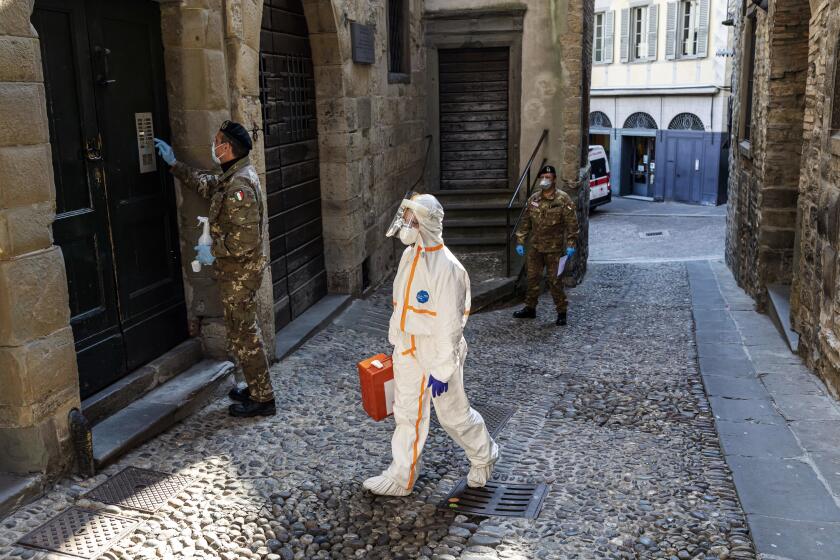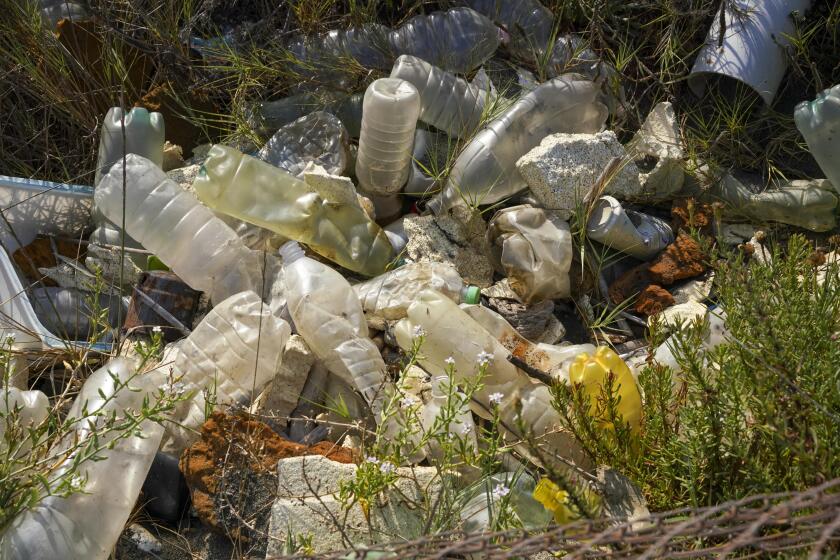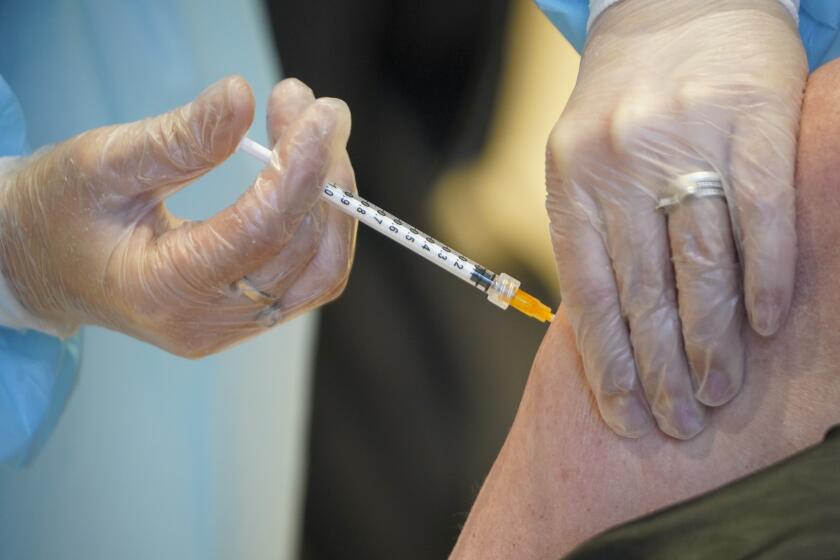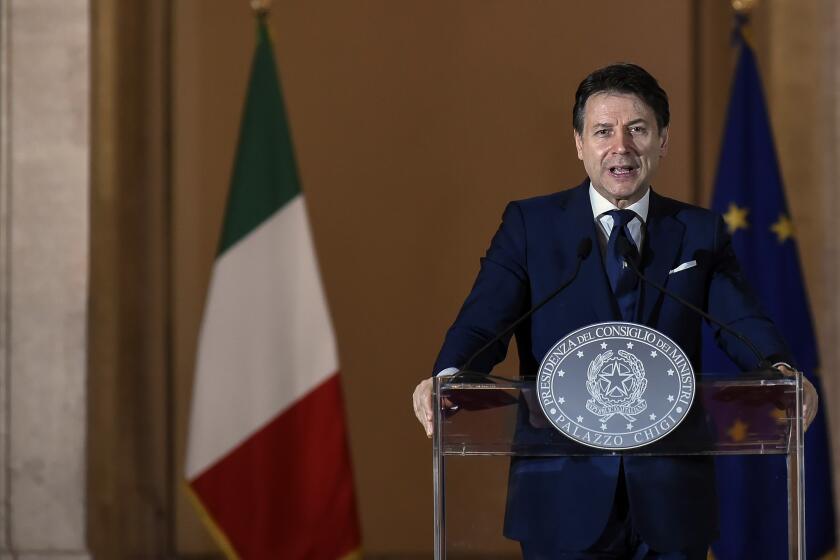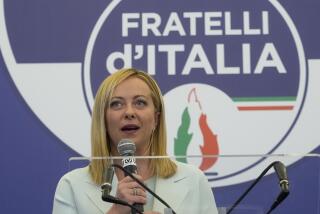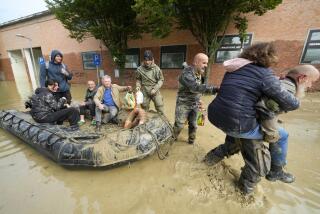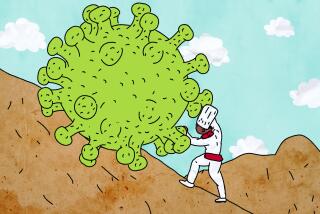A year after COVID-19 slammed Italy, a third wave is making it deja vu all over again
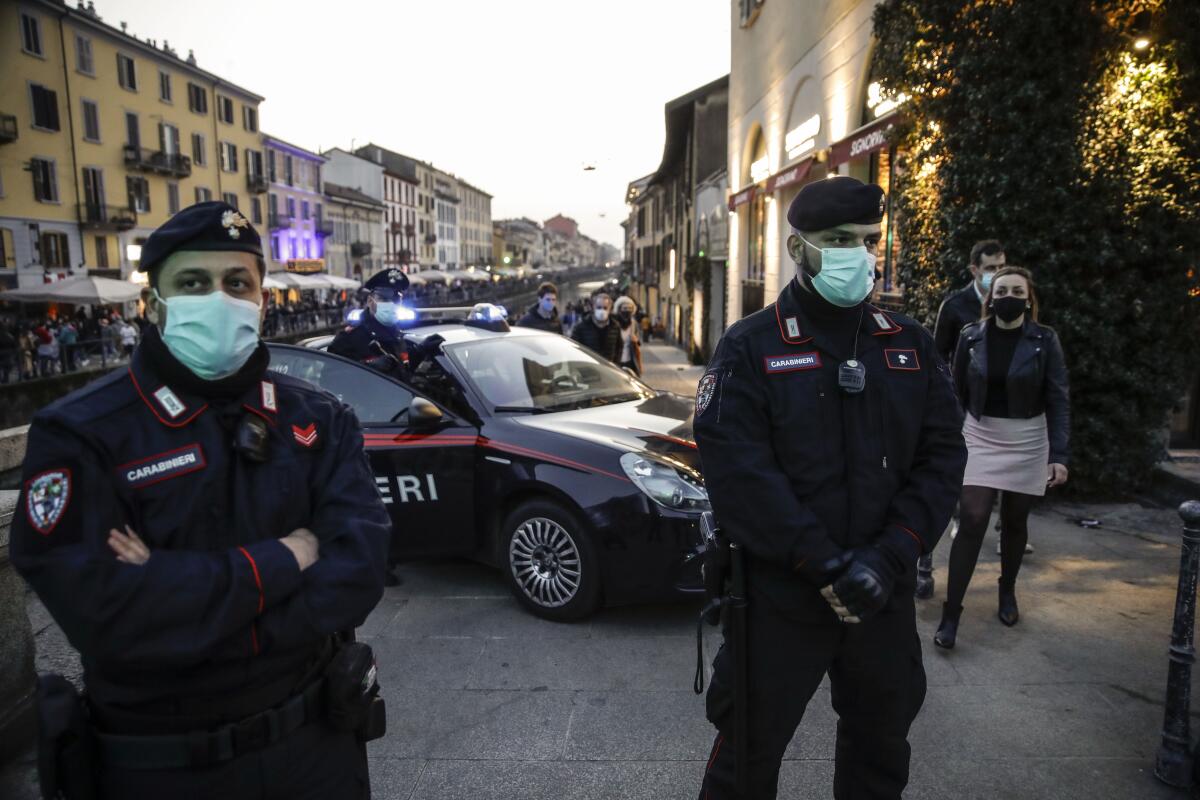
- Share via
ROME — In the Italian region of Lombardy, where the coronavirus made its dramatic debut in the Western world a year ago, Dr. Giacomo Grasselli is experiencing a horrible feeling of deja vu.
The coordinator of the region’s COVID-19 intensive care operation, Grasselli is seeing such an influx of new patients that regular surgeries in the area’s hospitals are being postponed. About 70 new COVID-19 cases are being admitted to intensive care wards every day, leading to a looming squeeze on both space and staff.
“There are 800 beds taken by COVID sufferers now, and we may get to 1,000 in 10 days,” Grasselli said wearily. “We have just 1,400 beds in total, so it’s getting very difficult, and all the doctors are really tired.”
Twelve months after the coronavirus made its first major landfall outside China and engulfed Lombardy in northern Italy, it feels as though nothing has changed as the region bears the brunt of Italy’s latest wave of infection and illness.
The world watched in horror in March last year as convoys of army trucks removed coffins from the Lombardy town of Bergamo before Italians set an inspiring example of fortitude by singing from their balconies and toughing it out through a grueling 10-week lockdown, which halted the contagion.
But things have not gone according to plan since then, with a second wave of COVID-19 cases in November and now a third as the British variant of the coronavirus takes root and Italy’s vaccine rollout sputters. The country’s death toll from the disease stands at 103,000, the highest in Europe after Britain’s.
Air quality has been terrible for decades in Bergamo, in northern Italy, which last year suffered many COVID-19 deaths. Researchers see a connection.
After a three-week lockdown was ordered Monday for two-thirds of the country, many Italians have found themselves back to square one, asking if 12 months of sacrifice, job losses and death was all for nothing.
“The rise in intensive care treatment in March has been incredible — exponential,” said Massimo Girardis, who coordinates treatment in a swath of the central region of Emilia Romagna, from Parma to Modena.
Unlike in the first wave, central Italy has been hit as hard as Lombardy this time, with areas such as Bologna — where intensive care patients have doubled this month — locking down before the bulk of the rest of the country did Monday.
“We expect to hit peak numbers on Friday, but other regions like Lombardy and Tuscany that waited until Monday to lock down won’t peak for another 10 days,” said Girardis.
Italy produced 10% less garbage during its coronavirus lockdown, thanks to a drop in consumption.
Italy rode out its second wave using a three-tiered system of localized restrictions on movements and a national curfew at 10 p.m. But the measures, which left shops, restaurants and schools open in most areas, were not rigorous enough to halt the highly contagious British variant, which crept into the country in January.
That coincided with a sluggish start to Italy’s vaccination campaign because of delayed deliveries by drug firms and a decision by authorities to limit doses of the AstraZeneca vaccine to residents under 55, out of concern that it had not been tested sufficiently on older people.
Italy has now received delivery of 8.9 million vaccine doses, including 5.9 million from Pfizer, 2.5 million from AstraZeneca and half a million from Moderna, with a total of 7.2 million shots given, compared with the 26.5 million administered by Britain, whose population is of similar size.
“We are impatiently waiting for vaccines — we could have given so many more by now, but we just don’t have them,” said Francesco Passerini, the mayor of Codogno, in Lombardy.
Europe’s drug regulator says there is no evidence AstraZeneca’s COVID-19 shot is associated with an increased risk of blood clots.
Home to the first Italian diagnosed with COVID-19 in February 2020, Codogno was among the first towns in the country to be sealed off in a so-called red zone. With 224 of its 16,000 residents having died of the disease, it’s difficult to find a family that did not lose a friend or a loved one.
A year later, Codogno is resisting the third wave better than other Lombardy towns, Passerini said. “We are just gritting our teeth and trying to win the battle. We don’t want to hear about red zones anymore, and we want our freedom back,” he said.
Residents of Alzano Lombardo, near Bergamo, are also fed up, said Fabrizio Dadone, the commander of the local carabinieri, or paramilitary police.
“Locals say, ‘We have already paid. Whoever had to die has already died, and whoever had to get sick has recovered. Why do we have to go through all this again?’” said Dadone.
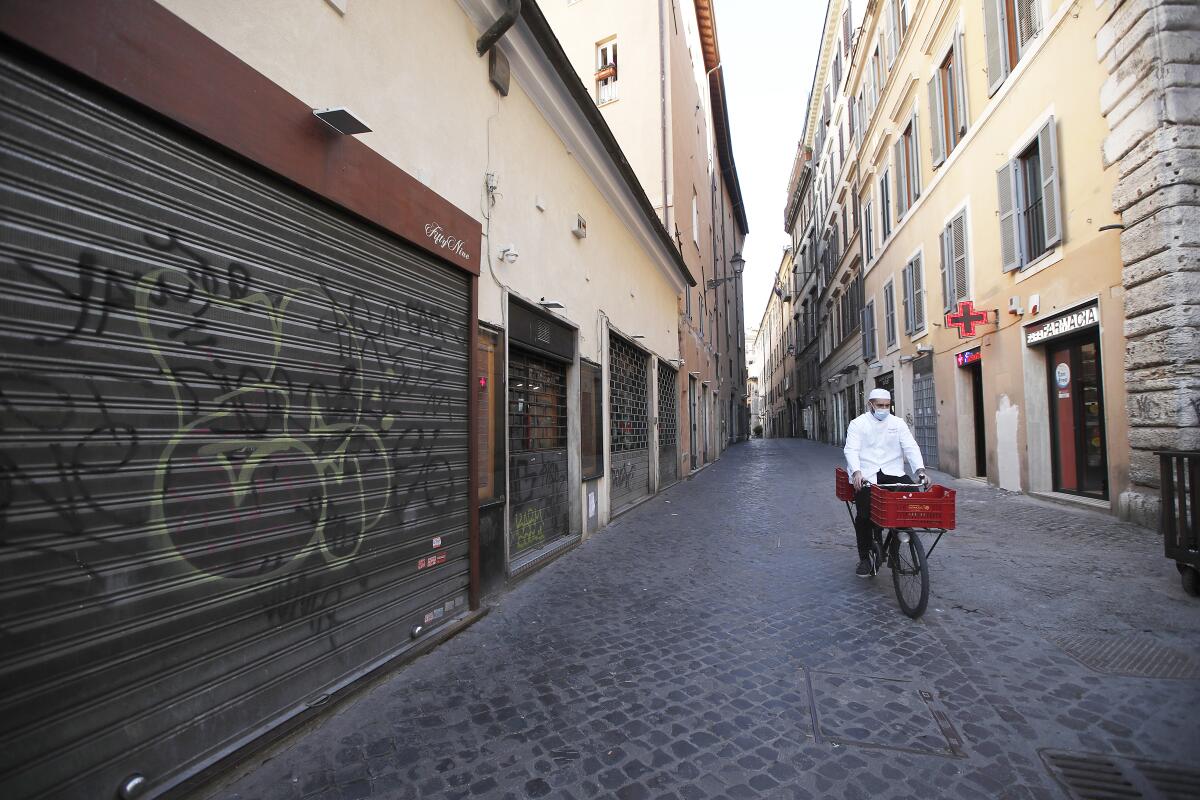
The 55-year-old officer has a different view. He was among the group of people who loaded those coffins onto army trucks in Bergamo in March 2020. Reading the names on the coffins, he realized he knew many of their occupants.
“It’s not easy to convince people we need to lock down to stop the hospitals filling up again, when they just want to work,” he said.
Many people across Italy are finding they have no work to go to, with almost 500,000 people out of a job because of the coronavirus’ devastating impact on the economy.
Restaurants have been especially hit hard by the 10 p.m. curfew in place since November, while the latest lockdown is predicted to cost them 5 billion euros (nearly $6 billion) in lost takings between now and Easter.
Camilla Moccia, 22, who runs a small restaurant in Ostia, near Rome, said her weekly takings have never topped 400 euros this year, not much more than her 300-euro weekly rent.
“When the first lockdown started, the restaurant was just starting to do well,” she said. “I hoped to pick up when it ended, but we are still plummeting downwards.”
Last week, Moccia’s mother posted a photo of Moccia sitting slumped in her kitchen, with her head on her knees. “We had had no bookings,” Moccia said. “I knew the lockdown was coming, and I thought I couldn’t do this anymore.”
But after the photo went viral and appeared on the front page of national newspapers, hundreds of messages of support poured in, giving Moccia a change of heart.
“It was like a hug from Italy, and gave me the strength to carry on,” she said.
Italian Prime Minister Giuseppe Conte is being questioned by prosecutors over decisions taken at the start of his country’s coronavirus outbreak.
During a ceremony held in Bergamo on Wednesday to mark the anniversary of the loading of the army trucks with coffins, Italian Prime Minister Mario Draghi said Italians “cannot wait for the moment to lift up their heads, restart and liberate the energies that have made this country marvelous.”
In Codogno, where COVID-19 started its assault on Italy, Passerini, the mayor, shares the determination to fight back.
“We were determined to show the world a year ago we could beat COVID, and we still are. We have discovered real spirit this past year and I hope we will soon emerge from the tunnel,” he said.
“When we do, we are going to have a huge party here, and we will invite the whole world.”
More to Read
Sign up for Essential California
The most important California stories and recommendations in your inbox every morning.
You may occasionally receive promotional content from the Los Angeles Times.
